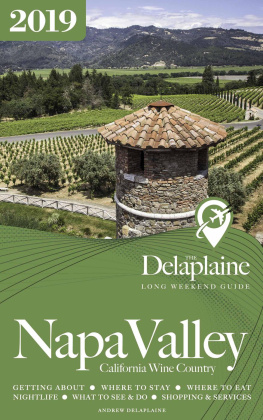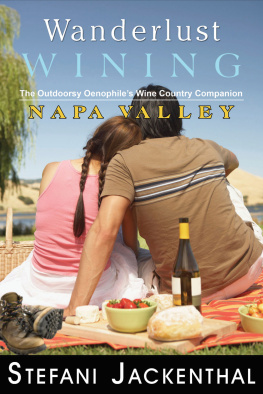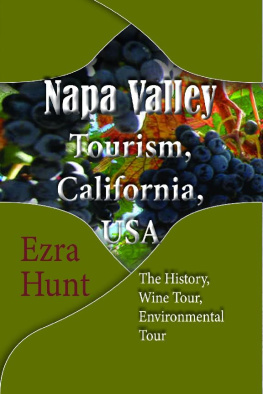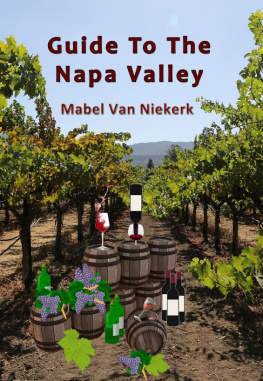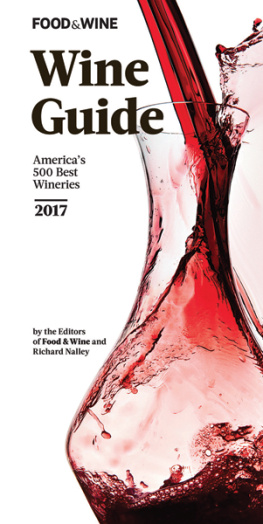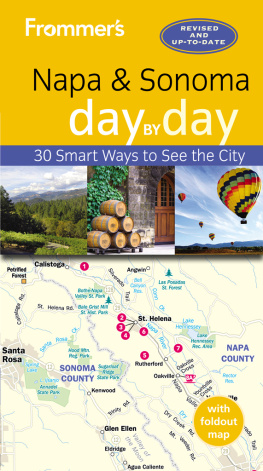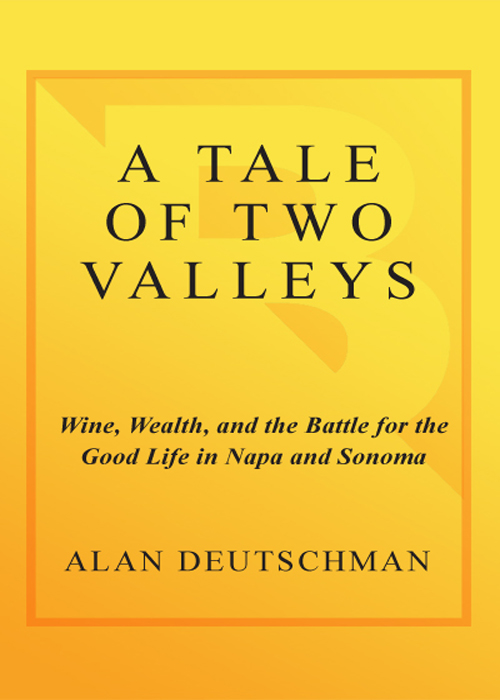

CONTENTS
PREFACE
The Plague in Paradise
PART I
A Place Unlike the Rest of America
PART II
Interlude: Napa
PART III
The Battle for the Good Life
To my parents, as always,
and to Susan
for the best day I spent in Sonoma
PREFACE
The Plague in Paradise
THE PLAGUE WAS COMING.
The carrier was a flying parasitical insect. Death with wings. It was hardly noticeable, only a half-inch long and nearly transparent. But it spread a bacterial disease.
An epidemic. Incurable. Fatal.
The people would be unharmed, in body at least, but their cherished lands would be ravaged. Tens of thousands of acres. The most valuable crop in the world. The source of the great wealth of the two valleys and their extraordinary power over the imagination of the American nation.
The insect would pierce the vines with its mouthpiece and suck out a thousand times its own weight in liquid as it tried to find the nutrients it needed from within the plant. It would excrete the excess water in a continuous stream, as though it were a powerful sprinkler irrigating the fields.
After it had sucked out what it wanted, the ungrateful parasite killed its host. The bug maliciously prevented the plant from feeding itself. The pest left behind a bacteria inside the vine that blocked it from drawing water from its roots and up through its cane to nourish the hanging fruit.
The vine would slowly die of thirst in the sun.
The thick canopies of green leaves would burn to yellow and then brown. The clusters of grapes would wilt and dry.
The earth would be scorched.
The plague was coming but an outsider would not have understood that many of the inhabitants of the two valleys thought this was good.
Some thought it furtively and some whispered it at the coffee shop and the town square and others said it aloud in the town hall meetings and the newspapers.
The plague was coming and some of the natives thought that their neighbors had brought it upon themselves. They had invited devastation by their avarice and pride. They had torn out nearly everything else to make way for the cash crop that was worth billions of dollars every harvest. They had ripped away the other vegetation that might have served as barriers to the progress of the insect or provided habitats for rival creatures that preyed on the invader. They had defied nature and now they were witnessing its retribution. They had the hubris to overturn the natural order of rampant biological diversity, but now the planet was restoring its own balance. Evolution was striking back with this killer insect, a mutation that was deadlier to the vines than any that came before. Humans had thought that they could impose their will on the environment, but now they would be humbled and humiliated by forces far more powerful than themselves.
The plague was coming. The deadly insect, Homalodisca coagulata, popularly called the glassy-winged sharpshooter, was carrying the bacteria Xylella fastidiosa. The apocalyptic messenger had already destroyed vast acreages of vineyards in the southern reaches of the state. The names of those places were far less well-known, but the devastation was as a solemn warning. The people here knew that their lands were next.
The plague might be stopped. The activists warned their fellow residents that the government was quietly developing a plan. Pesticides sprayed from above. Airplanes flying low over the valleys. Chemicals could kill the insect. Nerve toxins. Proven carcinogens. Substances that could harm not only the insects but also the citizens and their children in their homes and gardens and schoolyards near the farmlands.
A choice had to be made, they said. Profits or people. The elite or the masses. It was a reemergence of class warfare. Marx not in the factories of the industrial revolution but in the valleys of an anachronistic agricultural paradise.
Many of the people were secretly wishful that the wine business would be wiped out so that all the rich outsiders, lured there by its legend, would finally leave and the valleys could be reclaimed by the people who had been there before. They wanted to force away the new-money invaders. They were fighting to repel them politically. Putting forward their own candidates. Trying to take over city hall. Passing petitions to place voter referendums on the ballot. But even if that didn't work, nature might seek its own mighty revenge, as though the elites deserved a biblical vengeance.
THIS IS A STORY of the struggle for the soul of a place. It is about America's ambivalence over the right ways to preserve or exploit our remaining natural spaces. It's about our quests to live amid scenic beauty without inevitably ruining what attracted us there. It's about the difficulties of sustaining our unique local cultures, with their quirkiness and eccentricities, in this era of a rapidly proliferating and nearly pervasive mass culture. It's about the troubled efforts of people from wildly diverse subcultures to live closely together with civility and even harmony. It's about shifting conceptions of status and privilege in a nation where the cultural legacy is swiftly recast and a powerful new elite is created every generation. It's about seekers of the good life and the inspiration and fervor they bring to their pursuit. It's about the hazards of trying to spend our burgeoning wealth without undermining our humanistic values or provoking a new round of class warfare. And it's about a bunch of admirably impassioned people fighting fiercely over their competing visions of an ideal community.
This particular narrative is set in the wine country of the northern coast of California, a fabled locale with celebrated namesNapa! Sonoma!but many of the same conflicts are occurring in scores of lesser-known places in every region across our country. The same struggles are playing out within easy driving distance of every encroaching metropolis. The identical issues are arising at embattled rural outposts that until recently were considered safely isolated and too remote for prodigious development. We're at the beginning of a furious debate about the future of our farmlands, our towns, our small communitiesthe parts of America, still vast, that haven't been homogenized into the conformity of undifferiented sprawl, sameness, and soullessness.
After making such presumptuous claims to relevance and significance, I must confess that I didn't approach this project with the high intentions of a self-important social critic or the incorrigibility of a do-gooder or even the Olympian detachment of a scholar. My initial motivation was spectacularly hedonistic. It made me the object of an embarrassing amount of undisguised envy among my professional colleagues and friends and cocktail-party acquaintances.
The idea was to live in paradisefor free!
To dwell in a place that was famously beautiful and renowned for its extraordinary food and its superlative climate. A place that was extolled by the sumptuous photography and uncritical prose of a cadre of slick magazines as a lifestyle fantasy for both the fabulously affluent and the ambitiously aspiring.
And I could live therefree!because I had a number of generous good friends who were spectacularly rich. Not just doctor-lawyer-banker rich, not just sportscars-in-the-three-car-garage rich, not thrifty-millionaire-next-door rich. No, this was a rarified class that had so many millions that they had to be modified by Greek prefixes: centimillionaires and decamillionaires. These were the kind of people whose outlandish paper wealth was best calculated by consulting mandatory documents filed with the Securities and Exchange Commission.
Next page

